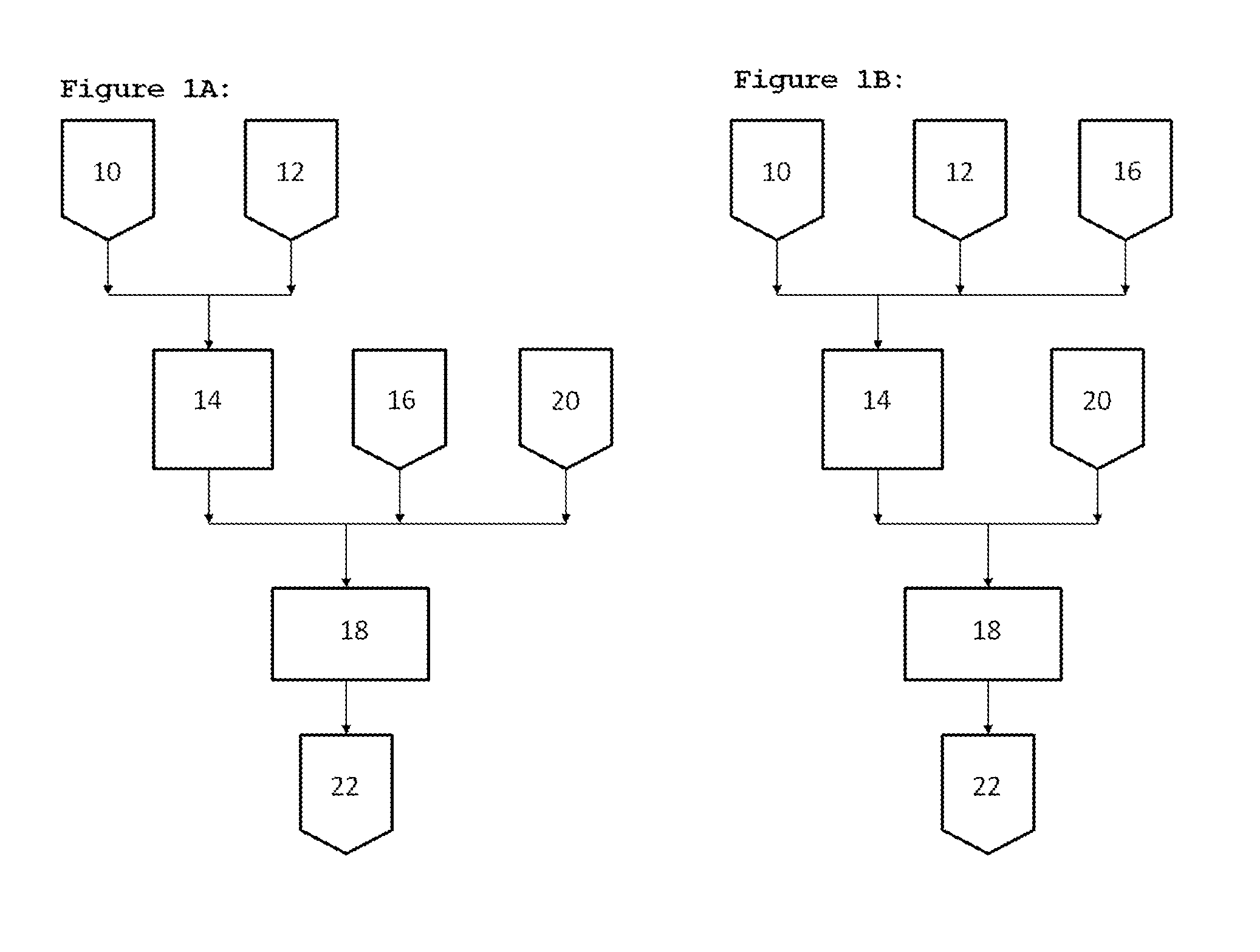Geopolymer cement
a technology of polymer cement and cement, applied in cement production, solid waste management, sustainable waste treatment, etc., can solve the problems of large carbon footprint, large carbon dioxide emissions, occupational health and safety hazards, etc., and achieve maximum compressive strength, maximum compressive strength, and accelerate strength growth rate
- Summary
- Abstract
- Description
- Claims
- Application Information
AI Technical Summary
Benefits of technology
Problems solved by technology
Method used
Image
Examples
Embodiment Construction
[0038]The geopolymer cement of the present invention is manufactured according to the process flow diagram of FIGS. 1A and 1B.
[0039]Silico-aluminate material in the form of fly ash in hopper 10 and granulated slag in hopper 12 are milled in grinder 14 before being blended with sodium carbonate 16 and sodium silicate 20 in blender 18 (FIG. 1A). Alternatively, the sodium carbonate 16 may be milled and mixed together in grinder 14 (FIG. 1B).
[0040]The fly ash can be obtained from coal-fired power stations (such as for example the Gladstone Power Station in Central Queensland). Fly ash from the Gladstone Power Station typically possesses a high glass content, a median particle size of about 10 microns and a high degree of sphericity. These properties make the fly ash suitable for preparing geopolymer cement according to the present invention. However, it can be appreciated that the fly ash used to prepare the geopolymer cement does not need to possess all these properties.
[0041]Table 1 c...
PUM
| Property | Measurement | Unit |
|---|---|---|
| particle size | aaaaa | aaaaa |
| particle size | aaaaa | aaaaa |
| particle size | aaaaa | aaaaa |
Abstract
Description
Claims
Application Information
 Login to View More
Login to View More - R&D
- Intellectual Property
- Life Sciences
- Materials
- Tech Scout
- Unparalleled Data Quality
- Higher Quality Content
- 60% Fewer Hallucinations
Browse by: Latest US Patents, China's latest patents, Technical Efficacy Thesaurus, Application Domain, Technology Topic, Popular Technical Reports.
© 2025 PatSnap. All rights reserved.Legal|Privacy policy|Modern Slavery Act Transparency Statement|Sitemap|About US| Contact US: help@patsnap.com

